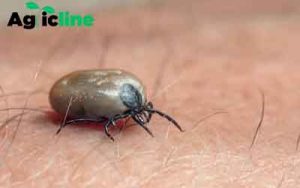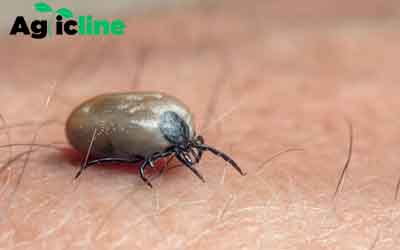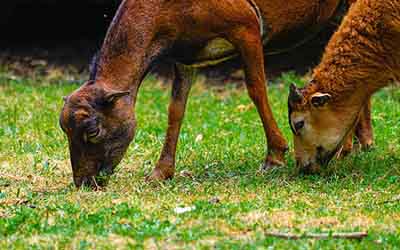Have you ever wondered how to get rid of varroa mites naturally? Well, you are in the right place. I will unravel everything you need to about varroa.
Varroa mites, tiny yet formidable enemies of honeybee colonies, have emerged as one of the most significant challenges in apiculture today.
These parasitic creatures, scientifically known as Varroa destructor, not only feed on the bodily fluids of adult bees and developing brood but also serve as vectors for various bee pathogens.
Their presence in a hive can lead to weakened bee immunity, spread of diseases, and, if not managed properly, the eventual collapse of the colony.
The importance of managing varroa mites cannot be overstated. Healthy bee colonies are not just vital for honey production but are indispensable for pollinating crops, thereby playing a pivotal role in global food security.

Are varroa mites harmful to humans?
Varroa mites (Varroa destructor) are a significant pest of honeybees, but they are not harmful to humans.
These mites are specifically adapted to live and reproduce on honeybees and their larvae, feeding on their bodily fluids and weakening the bees, which can lead to the collapse of bee colonies.
Varroa mites are a concern for bee health and beekeeping industries, not a direct threat to human health.
They do not bite, infect, or otherwise harm humans, as their lifecycle and feeding habits are exclusively tied to honeybees.
Varroa Mite Management
Varroa mite management is a critical aspect of beekeeping, given the severe impact these parasites can have on honeybee colonies.
Effective management of Varroa destructor involves a combination of monitoring, cultural practices, mechanical methods, biological controls, chemical treatments, and the use of resistant bee strains.
What is Varroa Mites?
Varroa mites are more than just pests; they are a beekeeper’s nemesis, capable of wreaking havoc on honeybee colonies with alarming efficiency.
To effectively combat these parasites, it’s essential to grasp their biology, lifecycle, and the precise nature of the threat they pose.
Varroa mites are small, reddish-brown parasites that primarily target the European honeybee, Apis mellifera. Their lifecycle is intricately linked with that of their host bees.
Female mites enter the brood cells just before they are capped, where they lay eggs on the developing bee larvae.
The mite offspring, both male and female, feed on the larval bee, weakening it and potentially transmitting deadly viruses.
Impact on Honeybee Health
The impact of varroa mites on honeybee colonies is profound. By feeding on the bees’ fat bodies, an essential organ for nutrient storage, detoxification, and immune response, mites severely impair bee health and longevity.
Varroa mites are vectors for several viruses, including the deformed wing virus (DWV), which can lead to severe deformities in bees, reducing their ability to fly and forage.
This not only affects the health of individual bees but can also decimate entire colonies, leading to what beekeepers often refer to as “colony collapse disorder.”
The Necessity of Varroa Mite Control
Controlling varroa mite populations is not optional; it’s a necessity for the survival of bee colonies.
Left unchecked, mite infestations can lead to the rapid decline and eventual collapse of even the strongest hives.
Effective management strategies focus on monitoring mite levels within the colony and employing targeted interventions to keep their numbers below damaging thresholds.
Preventative Measures for Varroa Mite Control
Preventative measures are a cornerstone of effective varroa mite management. By implementing strategies that inhibit the proliferation of mites, beekeepers can maintain healthier colonies, reducing the need for interventionist treatments.
Maintaining good hive hygiene is essential for preventing the spread of varroa mites.
Regularly removing dead bees and debris from the hive helps to reduce mite populations and improve the overall health of the colony.
During inspections, beekeepers should also check for mite feces on the cell caps, a clear indicator of mite presence.
Early detection through diligent monitoring enables timely intervention, preventing mites from reaching harmful levels.
Selective Breeding for Mite Resistance
One of the most promising long-term strategies for varroa mite control is selective breeding.
By choosing to breed bees that exhibit traits of mite resistance, such as grooming behavior or hygienic practices like uncapping and removing infested brood, beekeepers can gradually develop colonies that are better equipped to withstand mite infestations.
Research has shown that certain honeybee strains, like the Varroa Sensitive Hygiene (VSH) bees, possess natural behaviors that enable them to detect and remove mite-infested brood from the hive.
Incorporating these genetics into a beekeeping operation can significantly reduce mite levels over time without the need for chemical treatments.
Colony Management Techniques
Effective colony management also plays a critical role in preventing varroa mite proliferation.
Strategies include:
- Brood Interruption: Temporarily removing the queen to halt egg laying can break the reproductive cycle of varroa mites, as they rely on brood cells for reproduction.
- Splitting Hives: Dividing high-population hives not only prevents overcrowding but also disrupts the growth cycle of varroa mites, as new colonies may initially have lower mite loads.
- Swarm Prevention: Managing for swarming not only maintains the productivity of the hive but also reduces the density of bees and brood, which can help in controlling mite spread within the colony.
How to get rid of varroa mites naturally
See below;
Mechanical Methods for Reducing Varroa Mite Populations
- Drone Comb Removal
- Screened Bottom Boards
- Powdered Sugar Dusting
Drone Comb Removal
Varroa mites preferentially infest drone brood due to their longer development period, which provides a more extended window for mite reproduction.
Beekeepers can exploit this preference by introducing drone comb frames into the hive, which the bees will fill with drone brood.
Once the drone cells are capped and before the mites complete their development cycle, the beekeeper removes these frames and freezes them, killing both the drone brood and the mites within.
Screened Bottom Boards
The use of screened bottom boards is another mechanical method to control varroa mites.
These boards replace the solid bottom of the hive with a mesh screen that allows mites, but not bees, to fall through.
As mites are dislodged from bees naturally or through grooming behaviors, they fall out of the hive and cannot return.
This method passively reduces mite populations and can be enhanced by placing a sticky board below the screen to trap falling mites, allowing beekeepers to monitor mite fall and gauge infestation levels.
Powdered Sugar Dusting
Powdered sugar dusting involves sprinkling finely powdered sugar over the bees in the hive.
The sugar encourages grooming behavior among bees, leading them to remove both the sugar and the mites clinging to their bodies.
Mites dislodged by this grooming fall through the hive’s bottom, where, similar to the screened bottom board method, they can be trapped or simply fall away from the colony.
Biological Control Options
- Natural Predators of Varroa Mites
- Entomopathogenic Fungi
Natural Predators of Varroa Mites
Some research has explored the potential of natural predators that target varroa mites.
For example, certain species of mites and insects have been identified as predators of varroa mites in laboratory settings.
However, introducing these predators into the hive environment requires careful consideration to ensure they do not become pests themselves or disrupt the delicate balance of the hive ecosystem.
Entomopathogenic Fungi
Entomopathogenic fungi, which cause disease in insects, offer another biological control strategy against varroa mites.
Certain fungi species, such as Metarhizium anisopliae and Beauveria bassiana, have shown promise in infecting and killing varroa mites without harming honeybees.
These fungi can be applied to hives in spore form, where they infect and kill mites.
This method has the advantage of targeting mites both on bees and within the brood cells, potentially offering a comprehensive control solution.
Botanical Treatments and Essential Oils
Botanical treatments and essential oils have gained popularity among beekeepers as natural alternatives to synthetic chemical miticides for controlling varroa mites.
These natural substances can offer effective mite control with minimal risk to bees, honey, and wax when used properly.
- Thymol
- Menthol
- Eucalyptus Oil, Lemon Grass Oil, and Other Essential Oils
Thymol
Thymol, derived from the oil of thyme, is one of the most effective and widely used essential oils for varroa mite control.
It works by disrupting the mites’ nervous systems, effectively reducing mite populations without harming the bees.
Menthol
Menthol, sourced from peppermint oil, has also been used to control varroa mites. Like thymol, menthol acts as a miticide by affecting the mites’ respiratory systems.
It is typically applied in crystal form, placed at the hive entrance or on the top bars, where it sublimates and disperses throughout the hive.
Eucalyptus Oil, Lemon Grass Oil, and Other Essential Oils
Other essential oils, such as eucalyptus and lemongrass, have shown potential in varroa mite management.
These oils can be added to sugar syrup or water and sprayed directly onto the bees or applied via a diffuser in the hive.
They are believed to work by masking the odors that mites use to locate bee larvae, in addition to their direct miticidal effects.
Precautions and Best Practices
While botanical treatments and essential oils offer a natural approach to mite control, they must be used with caution to avoid adverse effects on bee health:
- Concentration and Application: It is crucial to adhere to recommended concentrations and application methods to prevent bee toxicity or rejection of the hive.
- Timing: Treatments should be applied when brood rearing is minimal to maximize impact on the mite population while minimizing disruption to the bees.
- Regulatory Compliance: Beekeepers should ensure that any substances used are compliant with local regulations and standards for organic beekeeping.
Integrated Pest Management (IPM)
Botanical treatments and essential oils are most effective when used as part of an Integrated Pest Management (IPM) strategy.
By combining these natural methods with mechanical and biological control techniques, beekeepers can achieve more sustainable and effective varroa mite management, preserving the health of their colonies and the quality of their bee products.
Integrative Pest Management (IPM) for Varroa Mites
Integrative Pest Management (IPM) represents a holistic approach to pest control that combines multiple strategies to manage pests, such as varroa mites, in an effective, environmentally sensitive way.
IPM for varroa mites involves a combination of monitoring, mechanical, biological, and botanical methods, each contributing to the overall health and resilience of bee colonies.
Combining Methods for Comprehensive Control
The essence of IPM lies in its integrative nature, leveraging the strengths of various control methods to achieve a more robust defense against varroa mites.
For instance, regular hive inspections and mite counts provide crucial data that inform the timing and necessity of interventions.
Mechanical methods like drone comb removal and screened bottom boards physically reduce mite populations, while biological controls and botanical treatments offer natural alternatives to chemical miticides.
Tailoring Strategies to Specific Needs
A key advantage of IPM is its flexibility; beekeepers can tailor their pest management strategies to the specific needs and conditions of their hives.
Factors such as hive strength, local climate, and mite infestation levels dictate the choice and timing of interventions.
Monitoring and Adjusting Approaches
Effective IPM requires ongoing monitoring of pest populations and hive health. Regular mite counts, along with observations of bee behavior and health, provide vital feedback that helps beekeepers adjust their management practices as needed.
This adaptive approach ensures that interventions are timely, targeted, and minimally invasive, reducing stress on the bees and preserving the integrity of hive products.
Educational and Community Support
Adopting an IPM approach benefits from educational resources and community support.
Beekeeping associations, extension services, and research institutions offer valuable guidance, workshops, and tools for implementing IPM strategies.
Moreover, sharing experiences and strategies within the beekeeping community fosters a collaborative approach to varroa mite management, promoting the exchange of ideas and successful practices.

Concluding remark on how to get rid of varroa mites naturally
The battle against varroa mites is a critical concern for beekeepers worldwide, with the health of honeybee colonies hanging in the balance.
As we have explored, managing this formidable pest requires a multifaceted approach, combining preventative measures, mechanical tactics, biological controls, and botanical treatments within an Integrative Pest Management (IPM) framework.
Recommendations
Best 5 Money making agriculture business ideas
5 Top Challenges faced by farmers in India
4 Advantages of continuous grazing
10 Environmental benefits of beekeeping



